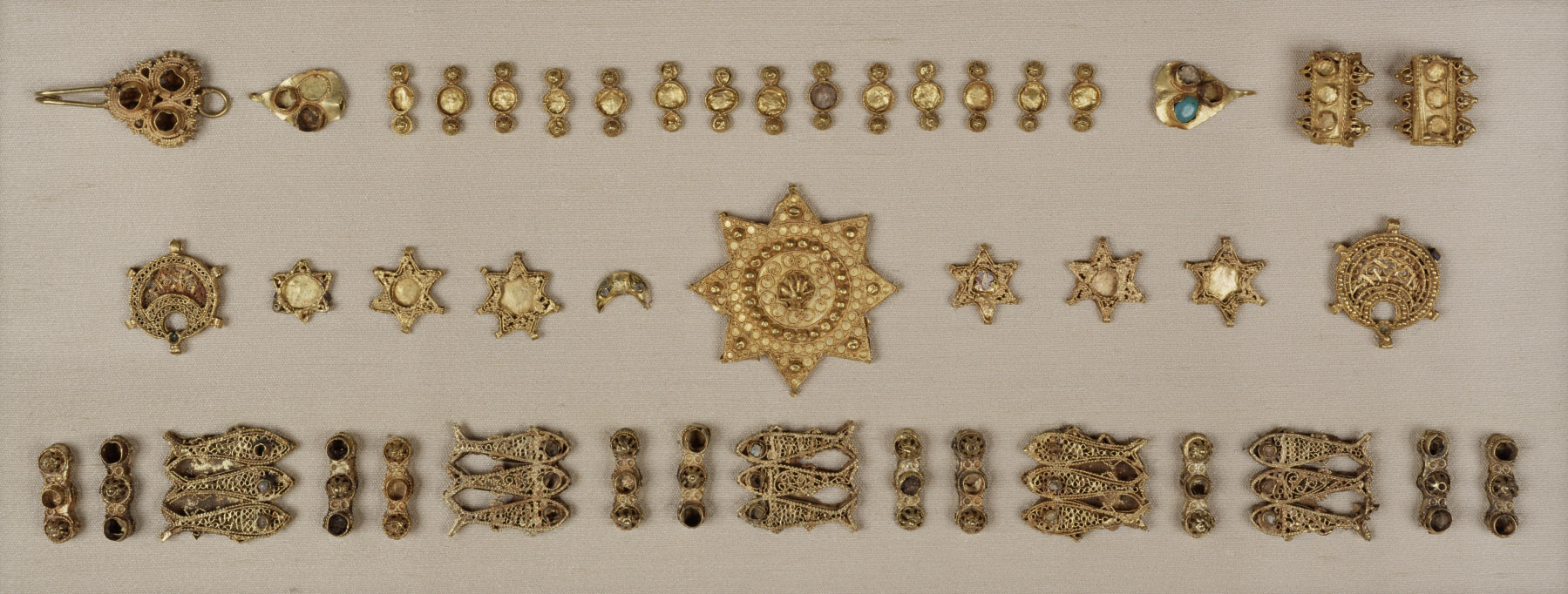Gold Jewelry Elements
These elements once formed different pieces of jewelry, including earrings, a pendant, hair adornments, a clasp, and possibly a belt. Some of them originally were set with gems and inlaid with colored enamel. They are part of one of the most important groups of jewelry surviving from al-Andalus, or Muslim Spain.
Provenance
Provenance (from the French provenir, 'to come from/forth') is the chronology of the ownership, custody, or location of a historical object. Learn more about provenance at the Walters.
[Said to have been found at Madinat al-Zahra, near Cordova]; Dikran Kelekian, New York and Paris (?) [date and mode of acquisition unknown]; Henry Walters, Baltimore, 1929, by purchase; Walters Art Museum, 1931, by bequest.
Exhibitions
| 2019-2022 | Caravans of Gold, Fragments in Time: Art, Culture, and Medieval Trans-Saharan Exchange. Mary and Leigh Block Museum of Art, Northwestern University, Evanston; Aga Khan Museum, Toronto; National Museum of African Art, Smithsonian Institution, Washington. |
| 1992 | Al-Andalus: The Art of Islamic Spain. The Metropolitan Museum of Art, New York. |
| 1987 | Islamic Jewelry. The Israel Museum, Jerusalem, Jerusalem. |
| 1979-1980 | Jewelry - Ancient to Modern. The Walters Art Gallery, Baltimore. |
Conservation
| Date | Description | Narrative |
|---|---|---|
| 2/22/1979 | Examination | examined for condition |
Geographies
Spain, Cordova (Place of Origin)
Measurements
Installation H: 4 3/4 x W: 14 x D: 9/16 in. (12 x 35.5 x 1.5 cm)
Credit Line
Acquired by Henry Walters, 1929
Location in Museum
Accession Number
In libraries, galleries, museums, and archives, an accession number is a unique identifier assigned to each object in the collection.
In libraries, galleries, museums, and archives, an accession number is a unique identifier assigned to each object in the collection.
57.1596




